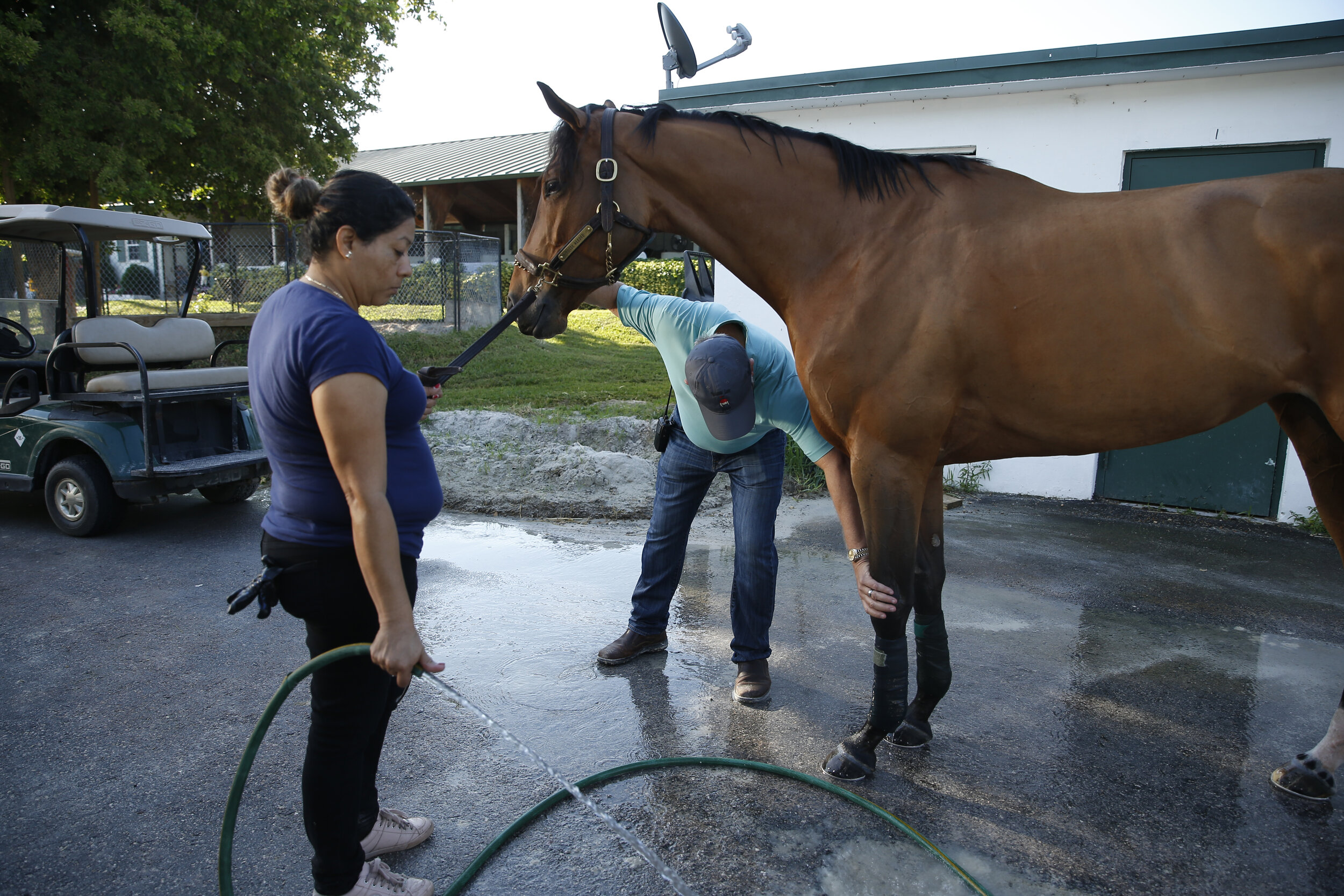Are we going soft on our horses?
By Amy Barstow
Over the years there has been a steady move away from traditional concrete surfaces in yards towards surfaces that are generally considered softer, such as rubber. Furthermore, in some areas, the surfaces of the tracks which link yards with training facilities (horse walks) have also moved towards ‘softer’ surfaces. This has led some to wonder if our horses are missing out on a key opportunity to condition their musculoskeletal system. This article will explore what the scientific research tells us about how different surfaces affect the horse and what this might mean for musculoskeletal conditioning and injury resistance.
The majority of the research that has highlighted the links between surfaces and injuries is from epidemiology studies. These studies view large populations of horses and pull together lots of different factors to elucidate risk factors for injury. They, therefore, do not attempt to investigate why surfaces may be implicated as a risk. To understand the link between surface and injury risk, other types of research must be done including biomechanics studies, lab-based studies on bone and tendon samples and prospective experimental studies. Biomechanics studies explore how the horse, especially their limbs and feet, move on different surfaces and the forces and vibrations that they experience. Lab-based work investigates how musculoskeletal tissues respond to loading and vibrations at the cellular and extracellular level. Prospective experimental studies take a group of horses and expose them to different environments (e.g., conditioning on different surfaces). Then you compare the groups, for example, looking for signs of musculoskeletal injury using diagnostic imaging techniques. The research done using these different techniques can then be pieced together to help us decide how to better manage the health and performance of racehorses.
There is a wealth of epidemiological data to suggest that the surface type and condition during racing influences the occurrence of musculoskeletal injuries in the racehorse. Though it must be remembered that musculoskeletal injury is multifactorial with training regimens, race distance, the number of runners, horse age and sex all coming into play. Though there are comparably fewer data available relating to the effect of training surface type and properties on musculoskeletal injury rates, what is available also suggests that firmer surfaces increase the risk of sustaining an injury either during training or racing. For example, horses trained on a softer, wood fibre surface are less likely to suffer from dorsal metacarpal disease (bucked shins) than those trained on dirt tracks. However, horses trained on a traditional sand surface have been shown to be at a greater risk of injury (fracture) during racing. This could be due to the soft sand surface not stimulating sufficient skeletal loading to adequately condition the musculoskeletal system for the forces and loading experienced during racing. It could also be the result of horses racing on a surface with very different properties to those that they trained on.
So far the majority of the scientific research discussed relates to horses galloping and cantering, which are not the gaits that they will generally be using around the yard or getting to and from the gallops. There is very little work to link sub-maximal (low) speed exercise on different surfaces to injury in horses. In a small group of Harness (trotting) horses, those trained on a softer surface had a lower incidence of musculoskeletal pathology identified using diagnostic imaging techniques, compared to those trained on a firm surface. There is also evidence of the benefit of softer surfaces in livestock housing. Experimental work by Eric Radin in the 1980s found that sheep kept on a concrete floor compared to a softer dirt floor had more significant orthopaedic pathologies at postmortem. Furthermore, the use of rubber matting reduces the incidence of foot lameness in dairy cattle. So it would appear that a softer ground surface is beneficial even at sub-maximal intensity locomotion.
The epidemiological data discussed so far tells us that surface can play a role in injury, but it does not provide any answers for why that may be the case. From a veterinary and a scientific perspective, I am interested in how different surfaces influence limb vibration characteristics and loading in horses. …



